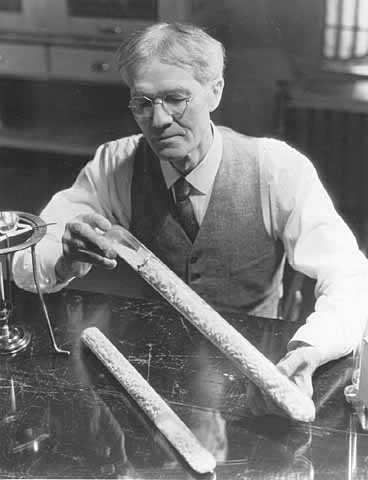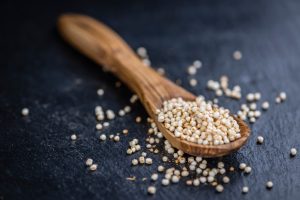Puffed Grains have been around for over 110 years, but the process of puffing technology had not evolved much until the last 20 to 25 years. And it has only been recently that this process and the many different types of versatile products it creates have caught the eye of journalists, bloggers and brands.
A quick history of puffed grains
 From humble roots in Minnesota, Alexander P. Anderson achieved masters and doctorate degrees in Plant Physiology. While conducting research at the New York Botanical Gardens in the early 1900s, he heated starch granules in a sealed glass tube, theorizing the water inside each grain would turn to steam and cause a reaction within the starch. Upon smashing the glass tube, the explosion blew out small fragments of swollen “puffed” starch. It would be a few years before he would spark any real interest in the process, but his fortune changed at a St. Louis food industry trade fair. By the end of the fair, Anderson and his team had puffed and sold more than 20,000 pounds of puffed rice. He obtained patents on the process and start Anderson Puffed Rice Company in 1905, with Quaker Oats Company selling the new product as a breakfast cereal.
From humble roots in Minnesota, Alexander P. Anderson achieved masters and doctorate degrees in Plant Physiology. While conducting research at the New York Botanical Gardens in the early 1900s, he heated starch granules in a sealed glass tube, theorizing the water inside each grain would turn to steam and cause a reaction within the starch. Upon smashing the glass tube, the explosion blew out small fragments of swollen “puffed” starch. It would be a few years before he would spark any real interest in the process, but his fortune changed at a St. Louis food industry trade fair. By the end of the fair, Anderson and his team had puffed and sold more than 20,000 pounds of puffed rice. He obtained patents on the process and start Anderson Puffed Rice Company in 1905, with Quaker Oats Company selling the new product as a breakfast cereal.
Fast forward to the early 1990s and the focus of processing puffed grains turned to thermodynamic efficiency with the goal of shortening the time to puff a grain and increase yields. The majority of puffed grains up to the mid-1990s were primarily wheat and rice varieties. With the advent of new technology that automatically controls time, temperature, and pressure, the types of grains available for puffing has increased dramatically. This new “dynamic” technology allows for grains as tiny as Quinoa, Teff, Kaniwa and Amaranth to be puffed to a very high quality level, while preserving commercially viable yield output in the 80% range. This is allowing cereal, granola, lifestyle bars and bakery brands to innovate their offerings with high protein, naturally gluten-free grains as ingredients, inclusions, decorations and stand-alone cereals.
But why puffed grains? What is the benefit?
 Puffed grains and cereals have proven their worth in the food industry from the early 1900’s right up to present day. Puffed grains provide innovative solutions to flavor and textural profiles, while providing a safe and cost effective way to increase nutritional profiles.
Puffed grains and cereals have proven their worth in the food industry from the early 1900’s right up to present day. Puffed grains provide innovative solutions to flavor and textural profiles, while providing a safe and cost effective way to increase nutritional profiles.
The benefits of puffed grains are obviously numerous, but the level of delivery depends on the type of equipment the grain was processed with. Ancient Brands Grain has access to the highest in puffed grain technology which provides the following:
- Physically improved cereals
- Consistent size, shape and color with very little clumping
- Minimum nutritional profile degradation
- Preserves integral grain elements
- Grain-like shape
- Neutral, enhanced flavor profile
- Non-hazardous
- Highly versatile
- Excellent swelling property
- High water binding
- Dimensionally stable, even during kneading
Ancient Brands Grain (ABG) is keenly focused on puffed grains and has one of the most diversified portfolios of puffed grains in the United States. ABG stands ready to support your puffed grain needs.

 Patrick Hemminger
Patrick Hemminger
Founder, Ancient Brands Grain
Patrick co-founded Ancient Brands Grain together with his brother Timothy Hemminger and has been dealing with commodities and markets throughout his entire career. Timothy has in depth knowledge of supply chains and accounting methods in the food ingredients industry.